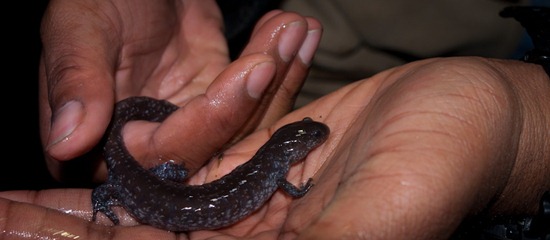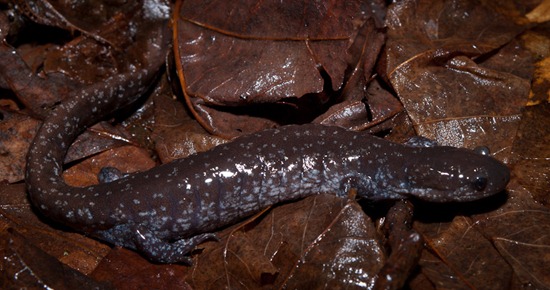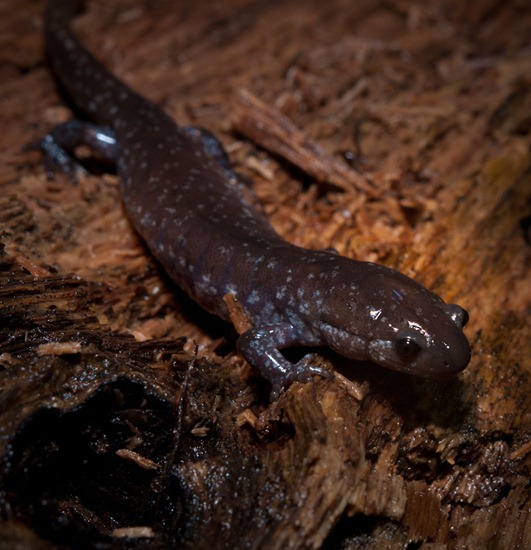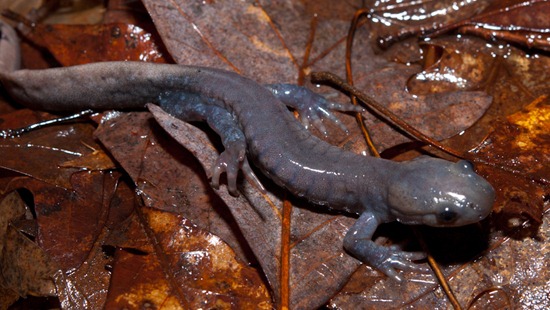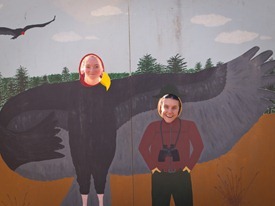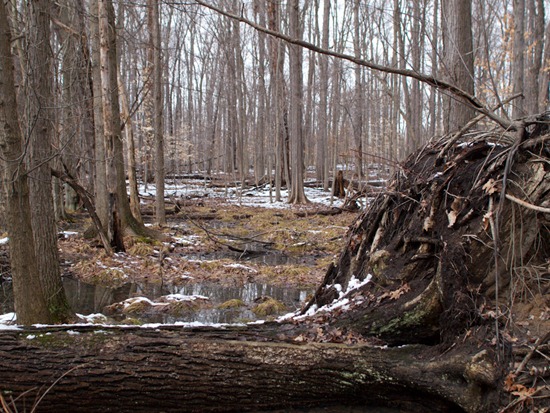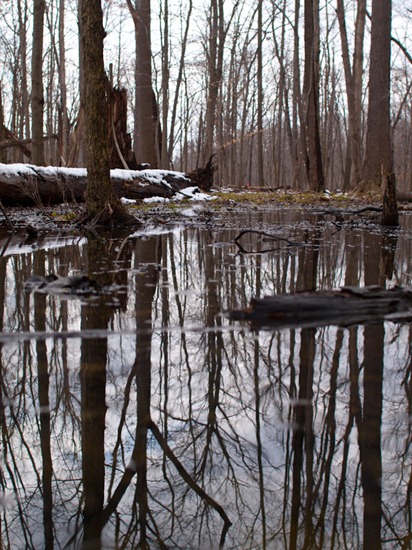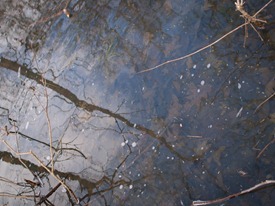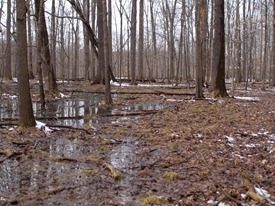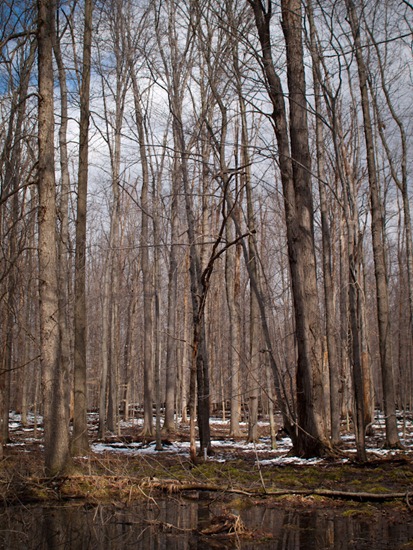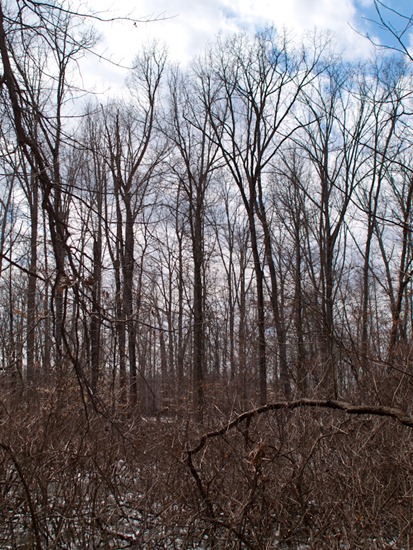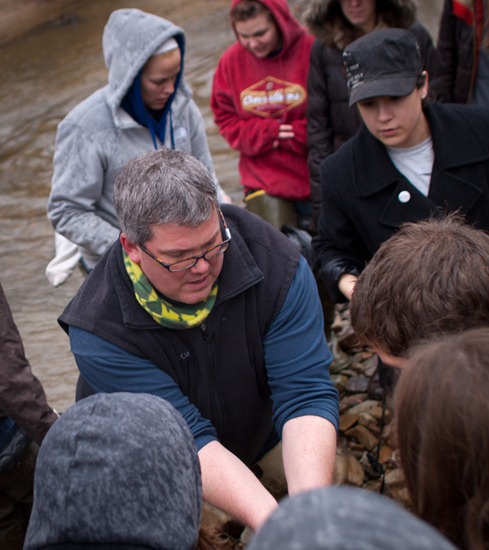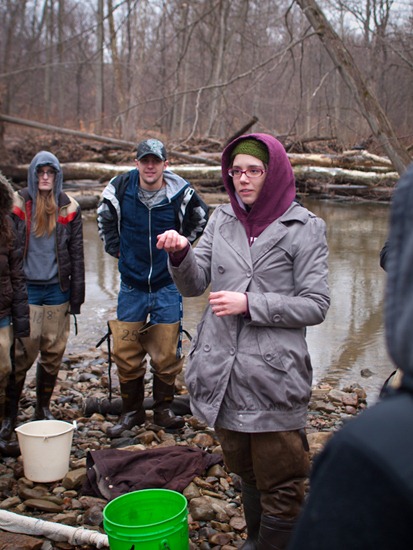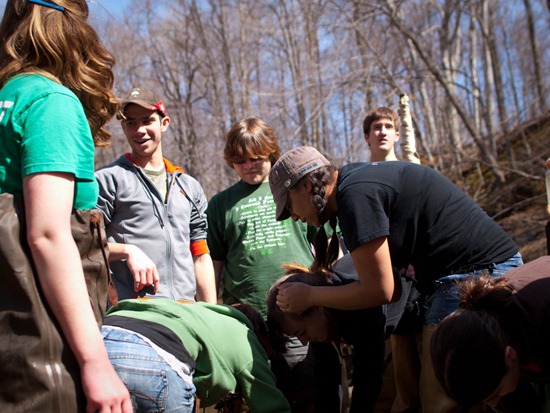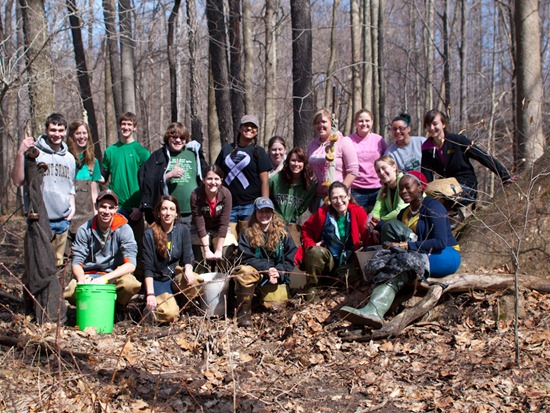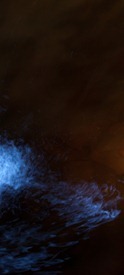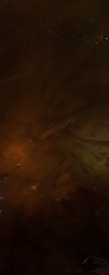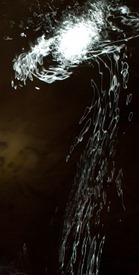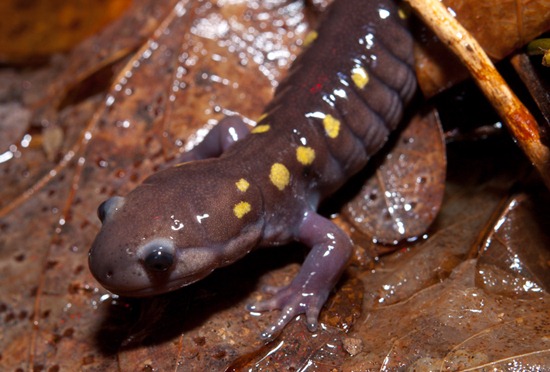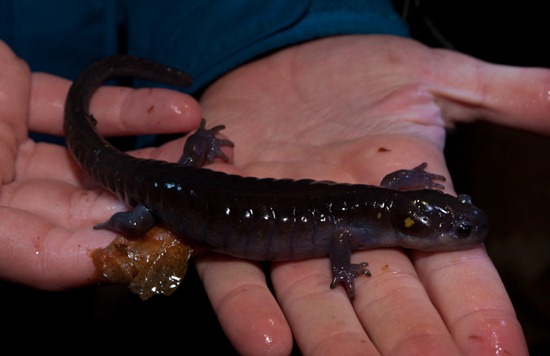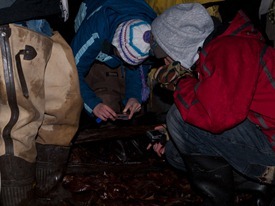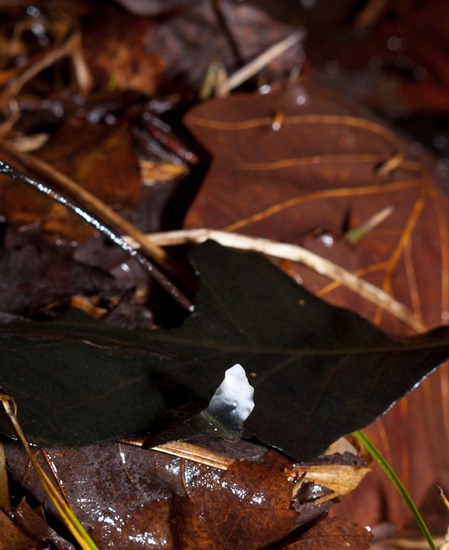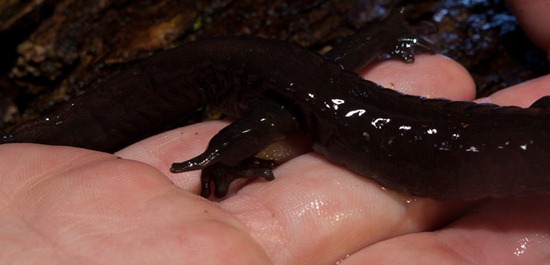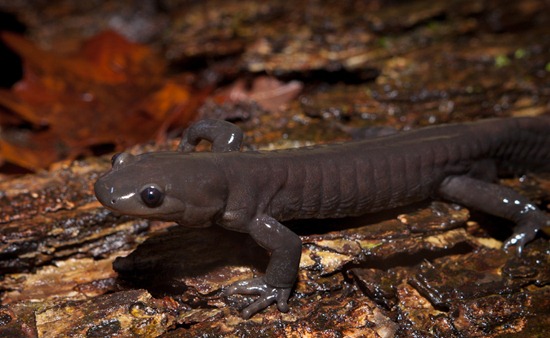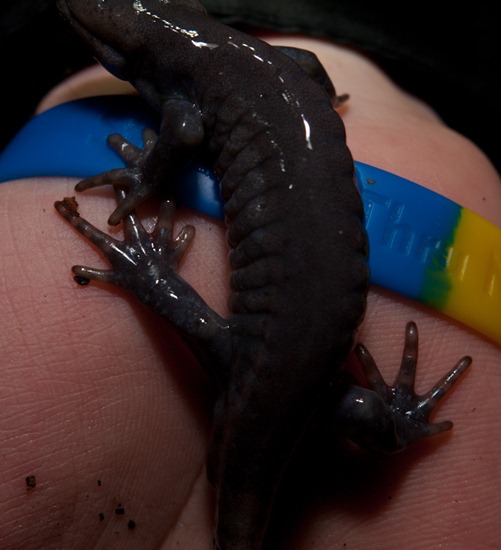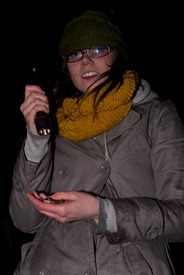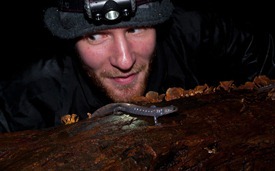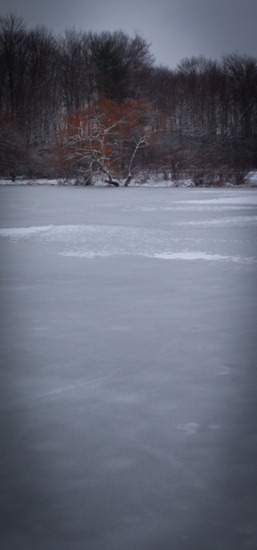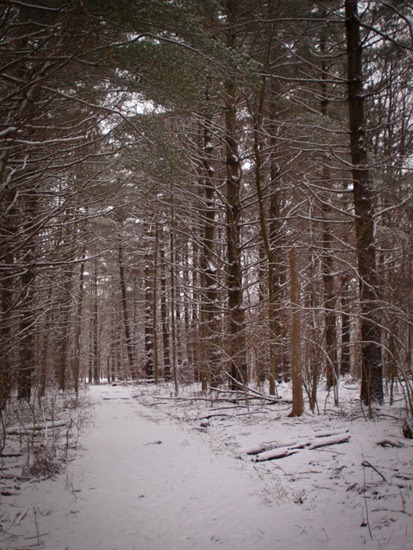A couple of years ago during the annual salamander outing, a flip of a log yielded a mole salamander with blue speckles. At the time, I didn’t look into it much – I was aware that it could be a blue-spotted salamander, Jefferson salamander, or a weird hybrid complex that consists of parthenogenic uni-sexual Ambystoma spp. This past Wednesday night, however, we found much more than the one, obscure amphibian under a log, possibly because the trip occurred earlier in the year (there’s still ice on the pool), and Jefferson salamanders are known to migrate over the snow to their breeding ponds.
According to Michael Lannoo’s book, Amphibian Declines, blue-spotted salamander populations are extremely limited in their Ohio distribution. Rather, Ambystoma laterale occurs commonly north of Ohio, in Michigan and New York, but is only recorded in one or two counties in Ohio. In contrast, a hybrid complex, often containing part of the A. laterale and A. jeffersonianum genome, is common in northern Ohio counties, and I think we encountered this bizarre uni-sexual hybrid! I don’t believe any males were found, and there was considerable variation in the amount of speckling along the sizes, legs and backs of the salamanders. The hybrid is known to make annual migrations to vernal pools to reproduce and is visually indistinguishable from blue-spotted and often Jefferson salamanders.
